The ideal darts length to stand is roughly the distance that allows you to comfortably lean forward, maintaining balance and a consistent throwing motion; this usually means standing about 7 feet 9 1/4 inches from the dartboard face for steel-tip darts. In this article, we’ll delve into the factors influencing this distance, explore variations for different dart types and stances, and provide tips to help you find your perfect throwing position.
⚠️ Still Using Pen & Paper (or a Chalkboard)?! ⚠️
Step into the future! The Dart Counter App handles all the scoring, suggests checkouts, and tracks your stats automatically. It's easier than you think!
Try the Smart Dart Counter App FREE!Ready for an upgrade? Click above!
Understanding the Standard Darts Length to Stand
The standard distance from the oche (throwing line) to the dartboard is a crucial element of the game, ensuring fairness and consistency. For steel-tip darts, the official distance is 7 feet 9 1/4 inches (2.37 meters) measured horizontally from the face of the board. For soft-tip darts, the distance is typically 8 feet (2.44 meters). However, these are just guidelines, and personal adjustments are often necessary.
Several factors influence your ideal darts length to stand. These include your height, arm length, throwing style, and preferred stance. Experimentation is key to finding what works best for you.
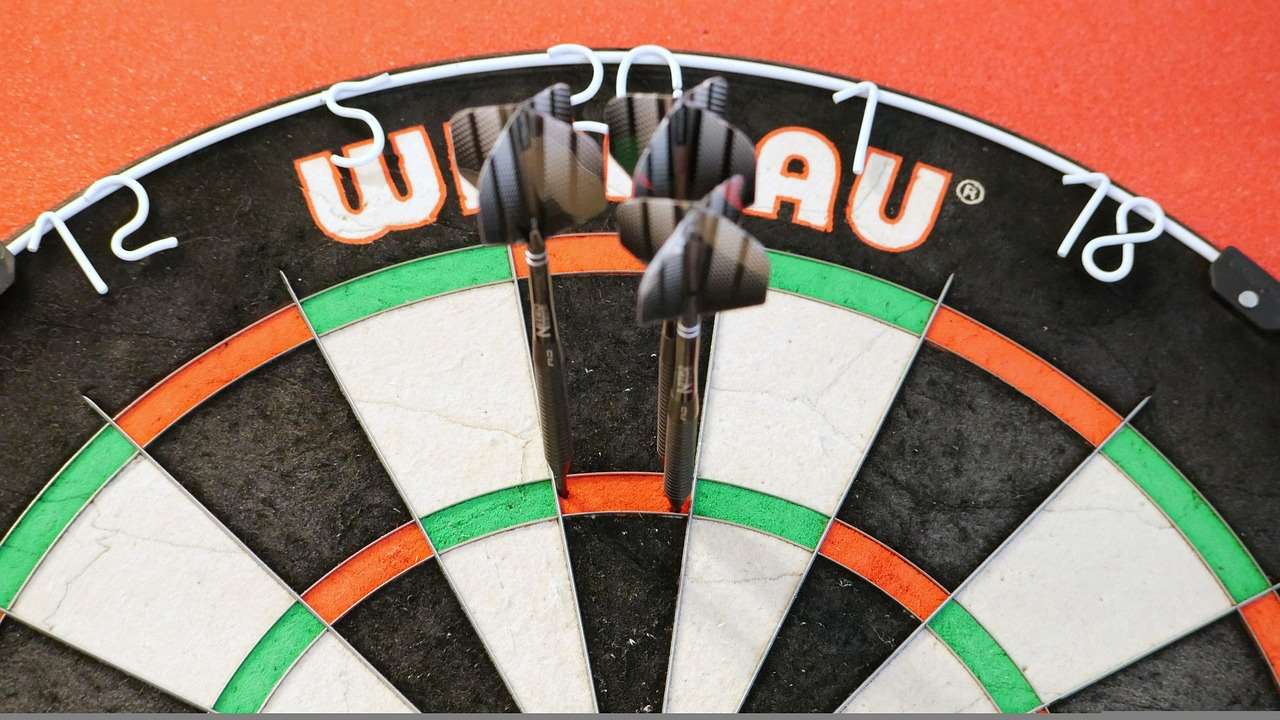
Factors Influencing Your Darts Throwing Distance
Determining the right darts length to stand is not a one-size-fits-all approach. Several key elements affect your individual optimal throwing distance. Let’s break them down:
Height and Arm Length
Taller players with longer arms may find they naturally stand a little further back, while shorter players might prefer a closer stance. This is simply due to the mechanics of the throwing motion and the natural reach of your arm. Someone with long arms may naturally stand further from the board than someone with shorter arms. Consider adjusting your position accordingly.
Throwing Style
Do you have a pronounced forward lean, or do you stand more upright? Your throwing style significantly impacts the effective distance you need. A strong forward lean brings you closer to the board during your release, effectively shortening the distance. An upright stance requires a longer reach, potentially necessitating a slightly greater darts length to stand.
Stance and Balance
Your stance – whether you stand with your dominant foot forward, squared to the board, or at an angle – will also influence your ideal throwing position. A stable and balanced stance is crucial for consistent throws. Experiment with different stances and see how they affect your reach and balance at the oche. The dart board rules should also be consulted for proper height of board.
Finding Your Ideal Darts Stance and Throwing Position
Finding the perfect darts length to stand is a process of trial and error. Here’s a step-by-step approach to help you discover what works best for you:
- Start with the Standard Distance: Begin by positioning yourself at the official distance (7′ 9 1/4″ for steel-tip).
- Assess Your Balance: Lean forward into your throwing stance. Do you feel stable and balanced? If you feel like you’re reaching too far or are off-balance, adjust your position.
- Adjust in Small Increments: Move forward or backward in small increments (e.g., half an inch or an inch) to fine-tune your distance.
- Focus on Consistency: The goal is to find a position where you can consistently replicate your throwing motion. Pay attention to how each adjustment affects your release and accuracy.
- Record Your Results: Keep track of your performance at different distances. Note which positions feel most comfortable and which ones yield the best results.
The Role of Dart Length and Weight
While we’re primarily focusing on the darts length to stand, it’s important to acknowledge that the dart itself plays a significant role in your overall throwing experience. The length and weight of your darts can influence your grip, release, and trajectory.
Experimenting with different darts can complement your adjustments to throwing distance. You might find that a heavier dart requires a different stance or throwing motion compared to a lighter one. The target javelin darts may be the right solution for you.
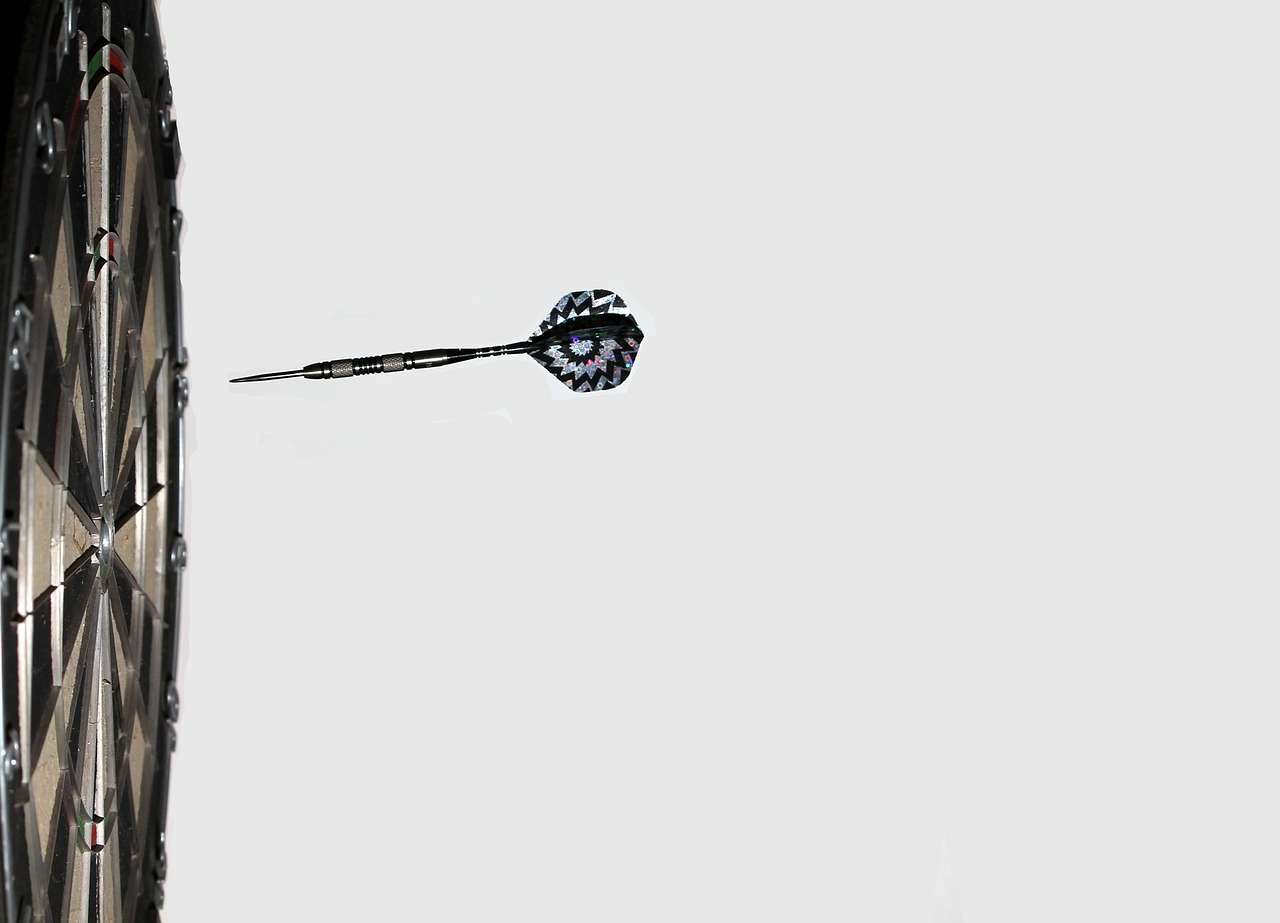
Common Mistakes to Avoid When Determining Your Throwing Position
Many players make common errors when trying to optimize their darts length to stand. Avoiding these mistakes can save you time and frustration:
- Ignoring Balance: Prioritize a stable and balanced stance. Don’t sacrifice balance for a few extra inches of reach.
- Over-Adjusting: Make small, incremental adjustments. Drastic changes can disrupt your muscle memory.
- Neglecting Consistency: Focus on replicating your throwing motion consistently from the same spot.
- Blaming the Distance for Poor Throws: Sometimes, inconsistent throws are due to flaws in your technique, not the throwing distance. Analyze your form critically.
Consider also, the dart board rules when setting up your board.
Adjusting for Soft-Tip Darts
While the principles of finding your ideal darts length to stand remain the same, there are slight differences to consider when playing soft-tip darts. The standard distance for soft-tip darts is typically 8 feet (2.44 meters), which is slightly further than the steel-tip distance.
This difference accounts for the lighter weight of soft-tip darts and the typically less aggressive throwing style used in soft-tip games. As with steel-tip darts, experimentation is key to finding your optimal position.
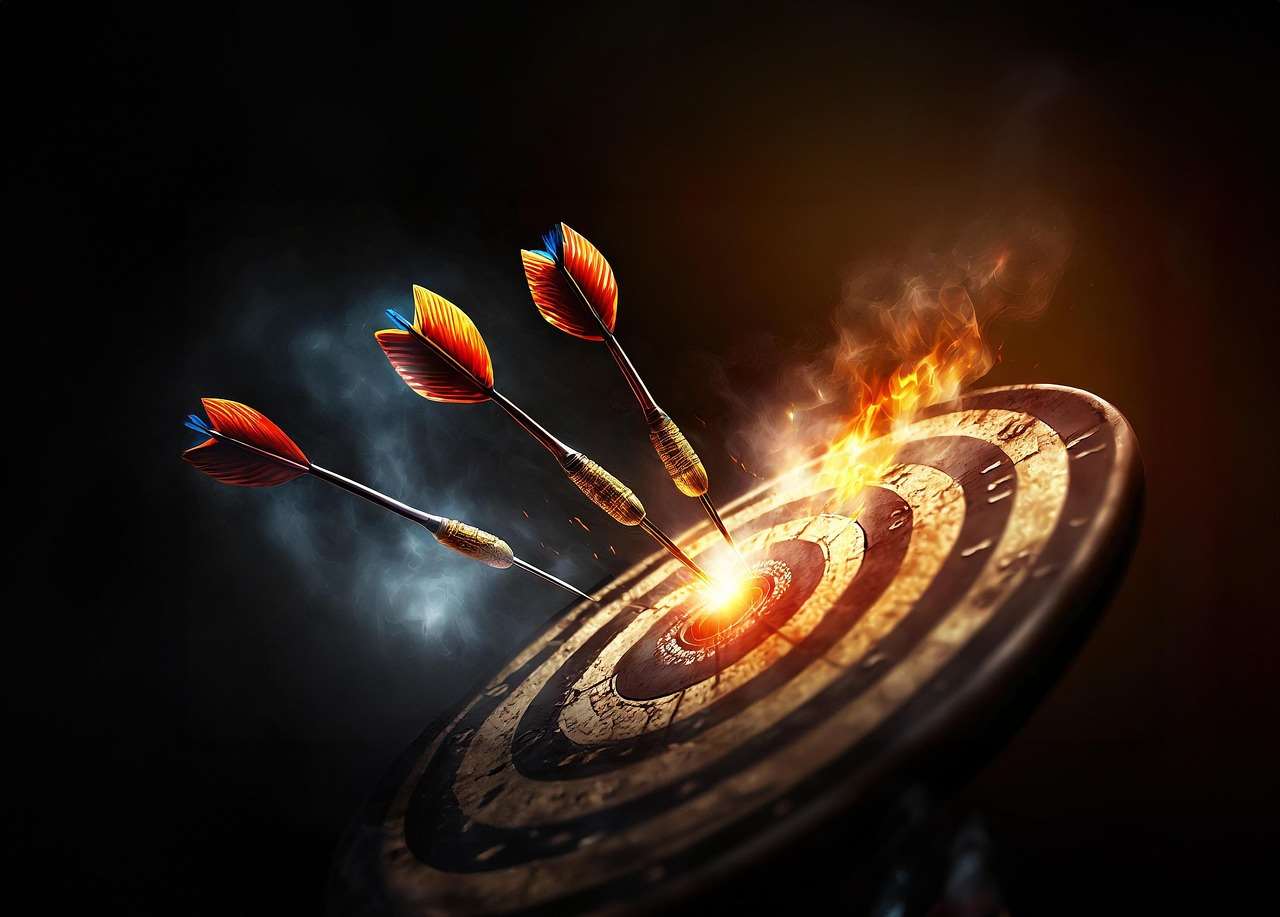
Advanced Tips for Fine-Tuning Your Darts Stance
Once you’ve established a comfortable and consistent darts length to stand, you can further refine your stance and throwing position with these advanced tips:
- Foot Placement: Experiment with different foot positions to optimize your balance and stability. Some players prefer their dominant foot directly aligned with the center of the board, while others prefer a slightly angled stance.
- Weight Distribution: Pay attention to how your weight is distributed between your feet. A balanced weight distribution promotes stability and helps prevent swaying during your throw.
- Head Position: Keep your head still and focused on the target. Avoid tilting or moving your head during your throwing motion.
- Shoulder Alignment: Ensure your shoulders are aligned with the board. This helps maintain a consistent throwing plane and improves accuracy.
Using Technology to Improve Your Darts Game
In the modern age, technology can assist in improving your darts game. Apps like the App to score darts can track your progress and analyze your performance. Some advanced systems even use motion sensors to analyze your throwing technique and provide personalized feedback.
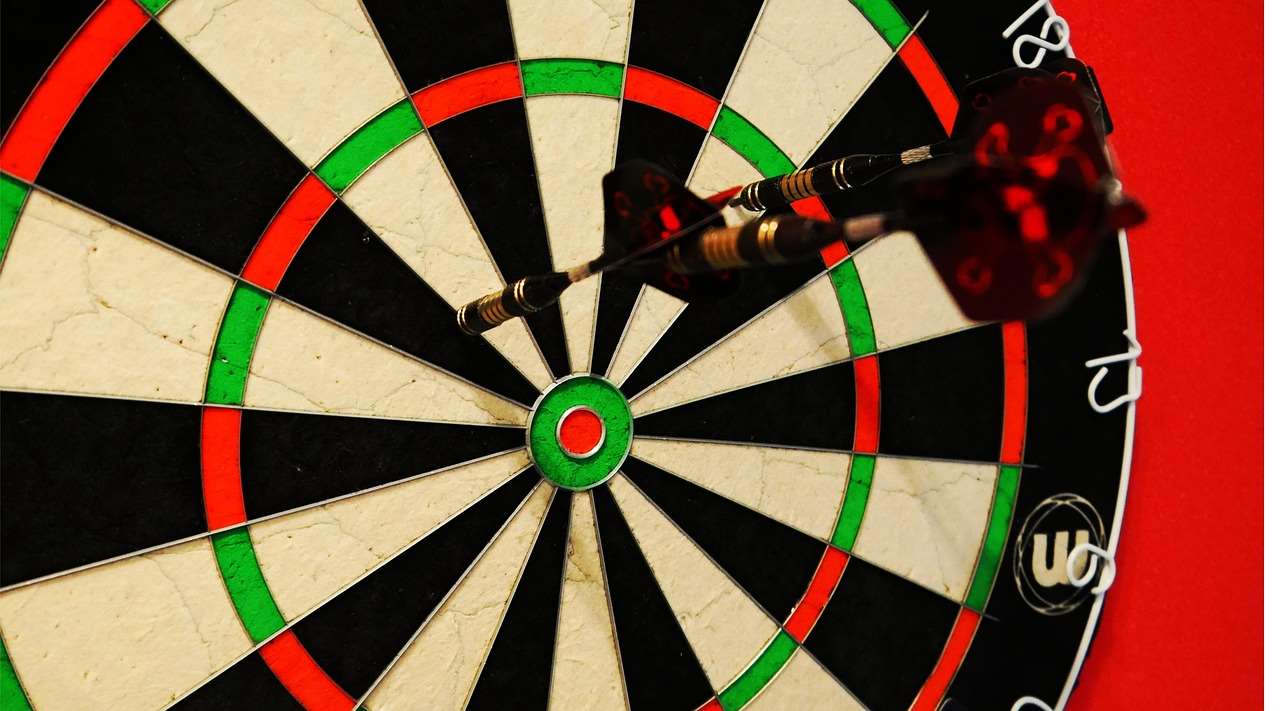
Mental Preparation and Consistency
Finding the perfect darts length to stand is only one piece of the puzzle. Mental preparation and consistency are equally crucial for success in darts. Develop a pre-throw routine to help you focus and maintain consistency in your throwing motion. Practice visualization techniques to mentally rehearse successful throws.
Remember that even the best players experience slumps. Don’t get discouraged by occasional bad throws. Focus on maintaining a positive attitude and sticking to your established routine. Also be aware of what’s the darts final score in major events.
Maintaining Your Optimal Throwing Position Over Time
Your body may change over time due to aging, injury, or changes in fitness level. It’s important to periodically re-evaluate your darts length to stand and make adjustments as needed. Pay attention to any changes in your balance, flexibility, or throwing motion, and adapt your stance accordingly.
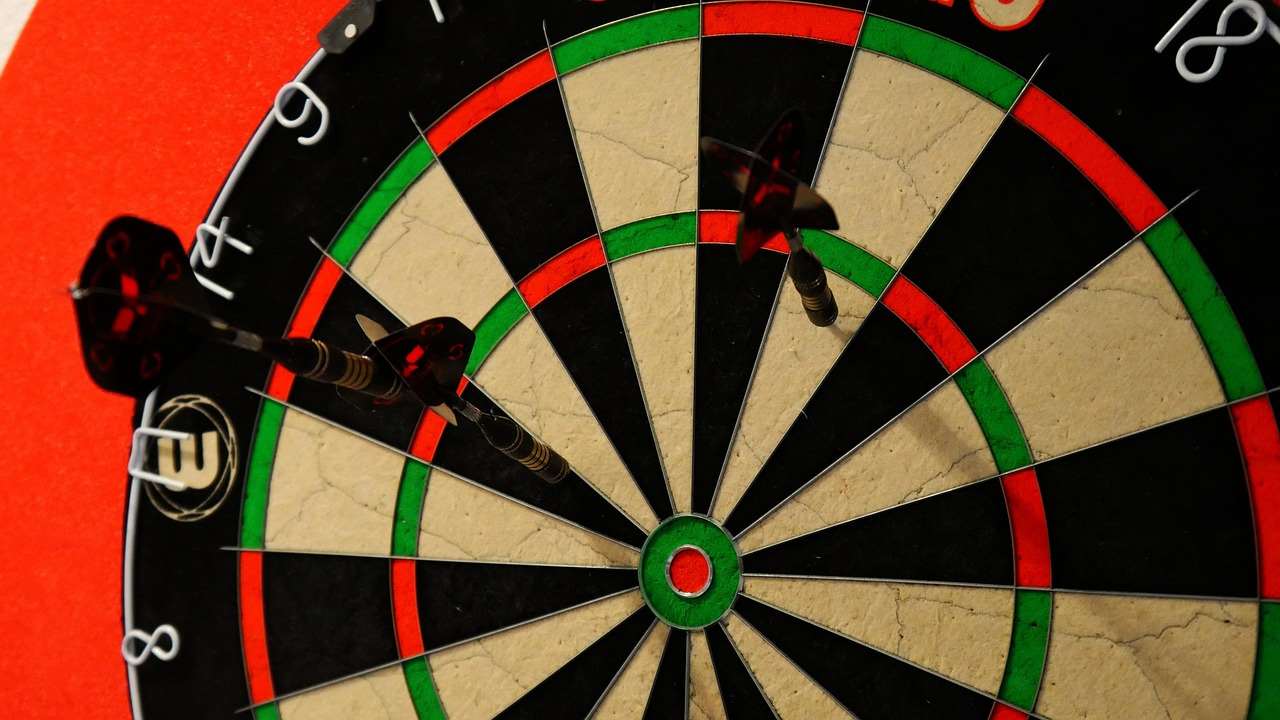
Conclusion: Mastering Your Darts Stance
Finding the right darts length to stand is a crucial element of improving your darts game. While the standard distances provide a starting point, individual factors like height, arm length, throwing style, and stance all play a significant role. Experimentation, attention to detail, and consistent practice are key to discovering what works best for you. Focus on maintaining a balanced stance, replicating your throwing motion consistently, and analyzing your performance to identify areas for improvement. Once you have, you can start looking at things like double top darts delivery time! So, grab your darts, head to the oche, and start experimenting today!
Hi, I’m Dieter, and I created Dartcounter (Dartcounterapp.com). My motivation wasn’t being a darts expert – quite the opposite! When I first started playing, I loved the game but found keeping accurate scores and tracking stats difficult and distracting.
I figured I couldn’t be the only one struggling with this. So, I decided to build a solution: an easy-to-use application that everyone, no matter their experience level, could use to manage scoring effortlessly.
My goal for Dartcounter was simple: let the app handle the numbers – the scoring, the averages, the stats, even checkout suggestions – so players could focus purely on their throw and enjoying the game. It began as a way to solve my own beginner’s problem, and I’m thrilled it has grown into a helpful tool for the wider darts community.